 Technology
Technology  Technology
Technology  Humans
Humans 10 Everyday Human Behaviors That Are Actually Survival Instincts
 Animals
Animals 10 Animals That Humiliated and Harmed Historical Leaders
 History
History 10 Most Influential Protests in Modern History
 Creepy
Creepy 10 More Representations of Death from Myth, Legend, and Folktale
 Technology
Technology 10 Scientific Breakthroughs of 2025 That’ll Change Everything
 Our World
Our World 10 Ways Icelandic Culture Makes Other Countries Look Boring
 Misconceptions
Misconceptions 10 Common Misconceptions About the Victorian Era
 Mysteries
Mysteries 10 Strange Unexplained Mysteries of 2025
 Miscellaneous
Miscellaneous 10 of History’s Most Bell-Ringing Finishing Moves
 Technology
Technology Top 10 Everyday Tech Buzzwords That Hide a Darker Past
 Humans
Humans 10 Everyday Human Behaviors That Are Actually Survival Instincts
 Animals
Animals 10 Animals That Humiliated and Harmed Historical Leaders
Who's Behind Listverse?

Jamie Frater
Head Editor
Jamie founded Listverse due to an insatiable desire to share fascinating, obscure, and bizarre facts. He has been a guest speaker on numerous national radio and television stations and is a five time published author.
More About Us History
History 10 Most Influential Protests in Modern History
 Creepy
Creepy 10 More Representations of Death from Myth, Legend, and Folktale
 Technology
Technology 10 Scientific Breakthroughs of 2025 That’ll Change Everything
 Our World
Our World 10 Ways Icelandic Culture Makes Other Countries Look Boring
 Misconceptions
Misconceptions 10 Common Misconceptions About the Victorian Era
 Mysteries
Mysteries 10 Strange Unexplained Mysteries of 2025
 Miscellaneous
Miscellaneous 10 of History’s Most Bell-Ringing Finishing Moves
10 Scary Holes With Deadly Pasts
There’s something inherently scary about being underground. When it’s so dark that you can’t see your hand in front of your face, and when you think about the millions of tons of rock just waiting to crash down over your head, you can’t help shivering a little. But some openings in the Earth aren’t creepy simply because they make you claustrophobic. These 10 holes have death in their history, and they’re all the creepier for it.
10Catawba Murder Hole
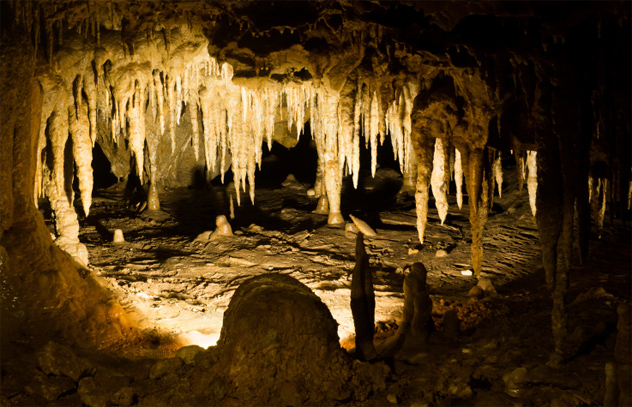
Locals have passed down plenty of legends about this cave. In one story, a farmer killed a traveling tinkerer in order to steal his wares. He dumped the man’s body back into his cart, then drove the horse and buggy over the edge of the Murder Hole. Another legend tells of a young couple whose families disapproved of their relationship, so they killed themselves by driving a cart into the Hole.
However, one death that certainly isn’t a legend is that of David Spencer. Back in 1958, Spencer was part of the Virginia Tech cave club. He was around 7.5 meters (25 ft) into the hole when his rope snapped and he plummeted into the depths. Investigators found that cleaning fluid had spilled onto his rope when it was in storage, which had weakened the fibers.
Nobody has died in the Catawba Murder Hole since that tragic accident, but dozens have still found ways to get trapped there. Marian McConnell and her husband bought the land around the Hole in 1994, and they now forbid anyone from entering without being escorted by one of them. Then again, people haven’t been allowed in since the mid-1960s, and that hasn’t stopped anybody. The Murder Hole may well claim another victim yet.
9The Spooner Well
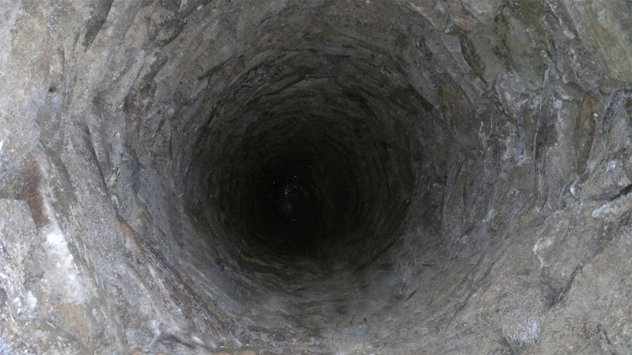
On July 2, 1778, Bathsheba Spooner gained the distinction of being the first woman to be executed in the United States after the country gained its independence. Her husband also received a unique distinction—two headstones. One was placed over his grave in a nearby cemetery, and the other one marks the location of his death. It reads, “Spooner Well—Joshua Spooner murdered and thrown down this well March 1, 1778, by three Revolutionary soldiers at the urging of his wife Bathsheba.”
In 1777, 32-year-old Bathsheba began an affair with a 17-year-old soldier named Ezra Ross. When Ross got her pregnant, Bathsheba plotted to murder her husband before he could find out. She met two British deserters, and used a combination of rum and promises of sexual favors to rope them into helping her. That night, when Joshua Spooner walked into the house, one of the soldiers ambushed him and beat him to death. Bathsheba helped the soldier and her lover throw the body down the well, which was later named the Spooner Well to mark the dastardly deed.
Everyone involved was arrested within 24 hours, and it didn’t take much longer for them to be convicted. Bathsheba pleaded for a stay of her execution to give her a chance to deliver her baby. It wasn’t granted, and she was hanged while five months pregnant.
8Dead Man’s Hole
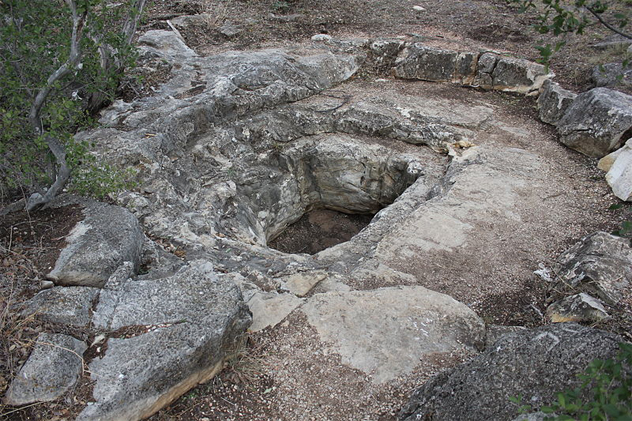
Dead Man’s Hole was discovered in Texas in 1821. Its other name is Devil’s Well—so it’s obvious that it hasn’t had a pleasant history. The sinkhole earned its reputation during the American Civil War, when Confederate gangs used the hole as a dumping ground for those with Unionist sympathies. The bones of at least 17 people have been found piled at the bottom of the sinkhole.
One particularly creepy feature of the hole is an oak tree growing beside it, with a strong limb stretched directly over the hole. Those destined to die would be hanged from the oak. Then, the rope would be cut and they would plummet to the bottom of the 47-meter (155 ft) drop. On the off chance that anyone survived both of those things, the hole was full of poisonous gas that would finish the job. It’s because of the gas that the sinkhole wasn’t fully explored until 1951, when breathing equipment became more readily available.
Today, the hole is covered, and a plaque commemorates the men known to have ended up there. Among those men were a pro-Union judge and several Union officials. Another victim was a man named Ben McKeever, who killed a former slave when his horse was bitten by the man’s dog. McKeever was ambushed by his victim’s friends and thrown down the hole. Unsurprisingly, its gory past has led to stories of people seeing and hearing ghosts in the area.
7Roman Well Of Belgrade Fortress
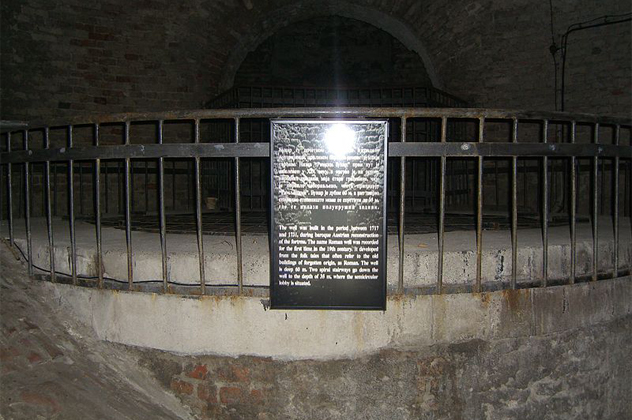
Despite its name, this 50-meter (164 ft) well in Belgrade Fortress wasn’t actually built by the Romans. The current well was constructed by Austrians in the 18th century, though there’s been a well on that spot for much longer. There are a few theories as to how it earned its name, the most likely being that it was simply named for the Holy Roman Empire.
Either way, it’s the well’s gruesome past that is most fascinating. In 1494, the city was a stronghold that protected Europe against the Turks. When a group of 37 traitors tried and failed to let invaders into the city, their punishment was to be lowered by rope to the bottom of the pit. After being left to starve for some time, they were thrown knives with which to kill and eat each other.
Then, in 1882, a socialist named Lena Knicanin attempted to assassinate the recently crowned king. Both she and her accomplice were arrested, and Lena was kept prisoner at the bottom of the well. She was found dead after a few days. The last victim of the well was a woman who was thrown into its depths by a madman in 1954. The hold retained its eerie atmosphere—it apparently impressed Alfred Hitchcock when he visited in the 1960s. Today, there is a grate over the well, but the courtyard is open to visitors.
6Devil’s Hole
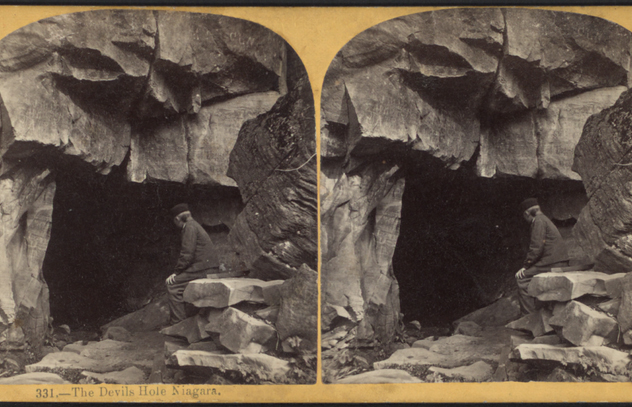
Located in the New York part of Niagara Gorge, the Devil’s Hole has just the right combination of native folklore and bloody history to earn it the description of “most haunted place in Western New York.” The local Iroquois talked of a demonic serpent named Evil One residing in the cave. According to their legends, people who entered the small cave either never came out again or came out with their hair turned white.
The Devil’s Hole Massacre of 1763, on the other hand, was a very real tragedy. A group of Seneca warriors chose the Devil’s Hole as the perfect place to attack an English wagon train. The war party struck at noon on September 14. Only two people escaped the bloodbath, and when 80 soldiers from a nearby fort heard the battle and rallied to the fight, the Seneca ambushed and slaughtered them as well. Their animals were driven into the hole, and their bodies were thrown in after them.
5Killing Cave Of Phnom Sampeau
If you visit Cambodia, one of the most unusual tourist attractions you can see is the Phnom Sampeau caves. During the 1970s, the caves were used as a venue for torture and murder by the Khmer Rouge, and the bones of their victims are still there. Some of the skeletons have been placed in a glass display case, and there are chicken-wire cages piled high with dozens of skulls. The tattered clothes of the victims are still there, along with the electrical wires used in the torture devices.
Many people were killed by being pushed into the cave from the skylight above. Some survived the fall, only to die an agonizing death from starvation and dehydration. As time went on, the pile of bodies got bigger, the fall got softer, and the proportion of people left to face a lingering death atop a pile of corpses increased.
The knowledge of what happened there offers a stark contrast to the mindset of Cambodian visitors to the caves today. The combination of beautiful buildings, artwork, and the stunning natural scenery has transformed the caves from a gruesome reminder of the past into a place to be celebrated. Creating joy out of heartbreak has helped the locals move on from their horrors.
4The Zindon Bug Pit
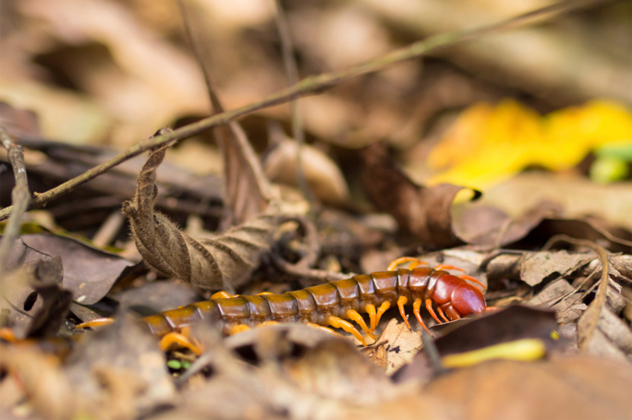
We’ve mentioned before that the diplomatic mission of British officers Charles Stoddart and Arthur Connolly didn’t go well. But there are a number of utterly horrifying details that we didn’t have room for, and they all relate to the “bug pit” of Zindon Prison in the Uzbek capital of Bukhara.
After angering the Emir of Bukhara by neglecting to bring gifts, Stoddart was promptly lowered into a deep hole alongside several other prisoners. Each day, they were covered in horrific creatures, including tropical insects, scorpions, and rodents. The prisoners were also regularly covered with horse manure. When Connolly showed up—a year later—to request Stoddart’s release, he was thrown into the pit, too. They were forced to endure torture by insect for another year before they were finally executed—which was almost certainly a blessed relief.
3Old Newgate Prison
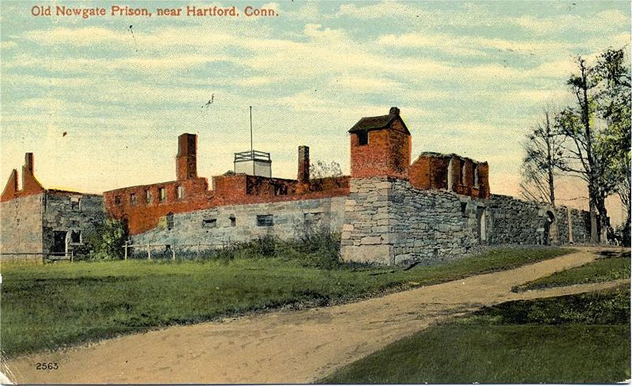
The original Newgate Prison in London has often been called “hell above ground.” When Connecticut’s first prison was built out of an old copper mine, its living conditions were so dismal that people began referring to it as Newgate as well, and the Old Newgate Prison came into being.
Barely any sunlight made its way down the steep shafts. The cells were damp, moldy, and claustrophobic. Prisoners were awoken at 4:00 AM and marched off in chains for a day of backbreaking labor in the prison’s nail shop. The chains were so heavy that the prisoners couldn’t walk and had to move with small jumps.
The floor was covered in fetid slime. Instead of beds, there was straw that was infested with vermin. Every day, the prisoners got pickled pork for lunch and mushed-up corn for supper—not on plates, but dumped straight onto the grimy stone floors. Anyone who didn’t work hard enough faced flogging, being hung upside down, or the stocks.
Unsurprisingly, people went to desperate lengths to escape. One group of prisoners tried to burn down an oak door which was blocking access to an old drainage tunnel. They piled up all the flammable materials they could find and set them alight. Unfortunately, the door didn’t burn through. Instead, the air was sucked into the fire, and the cavern filled with smoke. Several men suffocated in the escape attempt.
The final person to die there was Abel Starkey in 1827. He bribed a guard with $50 to leave his post, then tried climbing up a 21-meter (70 ft) shaft on a thin rope. The rope snapped, and Starkey fell to his death.
2Well Of Sacrifice
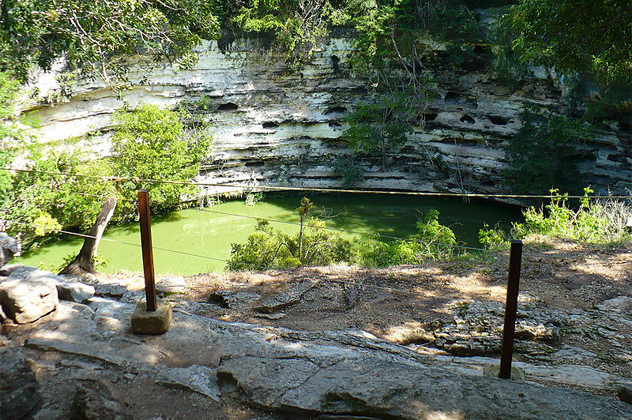
The Mayan city of Chichen Itza is a popular tourist destination and a World Heritage Site, best known for its iconic pyramid, El Castillo. A short distance away from the popular buildings is a limestone sinkhole, often called the Sacred Cenote.
The hole was first explored by an American who bought a plantation around it in 1904. He dredged pieces of gold, copper, and pottery from the water-filled pit. Some of the recovered artifacts originated from as far away as Colombia. As interesting as those were, it was the bodies which made the hole stand out. It contained the remains of at least 120 adults and many more children.
The lower leg bones of eight children show marks which indicate that they were flayed before they ended up in the pit. Reports from Spanish settlers suggest that the Maya regularly pushed people into the hole while they were still alive. Even more horrifying, the distance from the top of the well to the water below is only 20 meters (65 ft). While a fall from that height would certainly hurt, many of those pushed in would have still been alive after they splashed down, leaving them to slowly drown among the decaying remains of previous victims.
1The Haunted Mammoth Caves
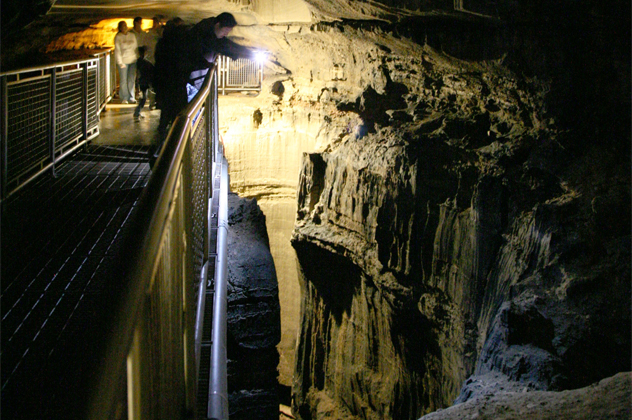
The Mammoth Cave in Kentucky is said to be haunted by Floyd Collins, an explorer who died there in 1925 after his leg was pinned under a rock. He was located shortly afterward, but rescuers weren’t able to get to him. He was stuck for two weeks and died just a few days before help managed to get through.
Cavers claim to have heard screams and pleas from the small cavern where he was trapped, which has now been sealed shut. There are even reports of whiskey bottles being thrown at people who approach. One woman claims that the ghost of Floyd saved her from a fall by catching her and pulling her back from a ledge.
America’s other Mammoth Cave—this one in Colorado—is also steeped in a history of bloodshed. Locals call it a “keeper,” which refers to the bodies of those who died there. It’s simply too dangerous to retrieve them, and so the cave keeps the corpses of the lost in its eternal clutches. The most dangerous spot is known as Angel Falls, a 23-meter (75 ft) drop that’s claimed three lives. Yet the most sinister part of the cave’s reputation is the claim that it was once home to a dangerous coven of witches.
The stories say that during the late 1970s, the cave was home to five evil warlocks, named Randy, Sunshine, Lobo, Patches, and Cowboy. The coven killed small mammals and drank their blood. Another report states that two girls saw the warlocks throwing a pregnant woman to her death in the cave. The cave was eventually sealed, and the witches were never found.
Alan’s reaction to researching this list was “caving sounds fun.” You can Twitter him to tell him how Twitter isn’t a verb.








